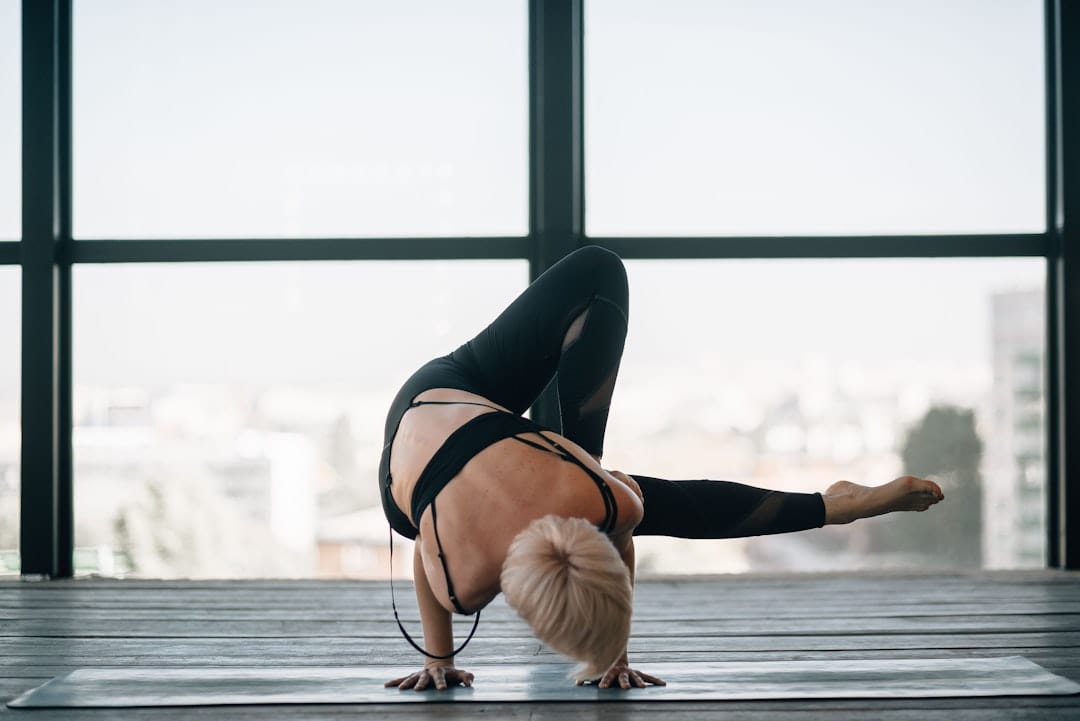Recent years have seen a rapid evolution in the interconnected fields of artificial intelligence (AI) and machine learning (ML). artificial intelligence (AI) refers to the creation of computer systems that are capable of tasks like speech recognition, visual perception, decision-making, and language translation that normally require human intelligence. Machine learning (ML) is a branch of artificial intelligence (AI) that focuses on creating statistical models and algorithms that let computers get better at a particular task over time. ML essentially lets computers learn from data and come to conclusions or predictions without having to be specifically programmed to do so. Teaching a computer system how to do a particular task using training data is one of the core ideas of machine learning. The model developed from these training data can be used to predict or make decisions based on newly discovered data.
Key Takeaways
- AI machine learning involves the use of algorithms to enable machines to learn from data and make predictions or decisions.
- AI machine learning has applications in various industries such as healthcare, finance, marketing, and customer service, among others.
- Challenges in AI machine learning include data quality, interpretability of models, and ethical considerations.
- Ethical considerations in AI machine learning include issues related to bias, privacy, and job displacement.
- Future developments in AI machine learning may include advancements in deep learning, reinforcement learning, and the integration of AI with other technologies.
- Implementing AI machine learning in business can lead to improved efficiency, better decision-making, and the development of new products and services.
- The impact of AI machine learning on society includes potential job displacement, changes in the nature of work, and ethical concerns about the use of AI in decision-making processes.
Multiple machine learning (ML) algorithms exist, such as supervised learning, unsupervised learning, and reinforcement learning, each with a distinct set of methods & uses. All things considered, AI & ML have the power to completely transform industries and increase precision and efficiency across a spectrum of jobs. Applications in Industry.
Within the healthcare industry, machine learning algorithms have the capability to accurately diagnose diseases by analyzing medical images. AI has applications in finance, including fraud detection & trend-based investment decisions. ML can be applied in the retail industry to improve inventory management and personalize consumer experiences. Artificial intelligence (AI) has applications in manufacturing that enhance predictive maintenance and production procedures.
Autonomous vehicles and route optimization are two applications of machine learning algorithms in transportation. new technologies. Virtual assistants, recommendation systems, autonomous robots, & natural language processing are further applications of AI and ML.
| Metrics | 2018 | 2019 | 2020 |
|---|---|---|---|
| AI and ML Adoption Rate | 25% | 40% | 60% |
| AI and ML Investment | 10 billion | 15 billion | 20 billion |
| AI and ML Job Openings | 50,000 | 75,000 | 100,000 |
With their ability to personalize experiences, automate tedious tasks, and make predictions based on massive datasets, these technologies have the potential to drastically alter the way we work and live. AI & ML’s Future. Future developments should bring forth even more creative uses of AI and ML as their capabilities grow. While AI and ML have many advantages, there are a number of issues that still need to be resolved.
Obtaining large quantities of high-quality training data is one of the primary obstacles. To make precise predictions or judgments, machine learning algorithms need a large amount of data to learn from. In certain situations, getting this data can be challenging, particularly for jobs that call for specialized expertise or are delicate in nature.
The interpretability of ML models presents another difficulty. It can be challenging to comprehend how many machine learning algorithms arrive at a given decision or prediction because they often function as “black boxes.”. This lack of transparency can be problematic in fields like finance or healthcare where it’s critical to comprehend the rationale behind a decision.
Concerns exist over bias & fairness in AI systems as well. ML models may generate unfair or discriminatory results if the training data is biased or not representative of the population. This is especially problematic for applications where fairness is essential, like loan approvals or hiring procedures.
In addition, there are moral questions about using AI in autonomous systems like drones or self-driving cars. There are concerns regarding accountability & responsibility when these systems have to make snap decisions that could mean the difference between life and death. While there are many advantages to AI & ML, there are also a number of issues that need to be resolved. A primary obstacle is the requirement for a substantial quantity of excellent training data. To produce precise predictions or judgments, machine learning algorithms need a large amount of data to learn from.
In certain situations, getting this data can be challenging, particularly for jobs that call for specialized expertise or are delicate in nature. A further difficulty is making ML models interpretable. As “black boxes,” many machine learning algorithms can be challenging to comprehend and thus make predictions or decisions. In industries like healthcare or finance, where it’s critical to comprehend the rationale behind a decision, this lack of transparency may present challenges. Concerns exist regarding AI systems’ fairness and bias as well. ML models may yield unfair or discriminatory results if the training data is biased or not representative of the population.
This is especially problematic for applications where fairness is essential, like loan approvals or hiring procedures. In addition, there are moral questions about using AI in autonomous systems like drones or self-driving cars. There are concerns regarding accountability and responsibility when these systems have to make snap decisions that could mean the difference between life & death. Careful consideration of the ethical issues raised by the application of AI and ML is necessary.
Data security & privacy are two ethical issues. Since AI systems need a lot of data to be trained & make decisions, there’s a chance that private data could be hacked if adequate security precautions aren’t taken. Accountability and transparency are additional ethical considerations. As was already mentioned, a lot of machine learning models function as “black boxes,” which makes it challenging to comprehend how they determine a given conclusion or forecast.
The absence of transparency in these systems poses concerns regarding accountability, particularly in crucial domains like criminal justice & healthcare. Concerns exist over bias and fairness in AI systems as well. ML models may generate unfair or discriminatory results if the training data is biased or not representative of the population. This is especially troubling for applications where fairness is essential, like loan approvals or hiring procedures. Also, using AI in autonomous systems like drones or self-driving cars raises ethical questions.
These systems raise concerns about accountability and responsibility because they have to make snap decisions that could mean the difference between life and death. The application of AI and ML brings up significant ethical issues that require careful thought. Privacy and data security are two ethical issues. Sensitive data may be hacked if appropriate security measures are not taken, since AI systems depend on vast volumes of data for training and decision-making. Transparency and responsibility are additional ethical factors.
Many machine learning (ML) models function as “black boxes,” as was previously mentioned, which makes it challenging to comprehend how they arrive at a specific conclusion or prediction. When these systems are utilized in crucial applications like criminal justice or healthcare, their lack of transparency raises concerns about accountability. Fairness and bias in AI systems are further issues that raise concerns. Malicious or discriminatory results may be produced by ML models if the training data is biased or not representative of the population.
This is especially problematic for applications where fairness is essential, like loan approvals or hiring procedures. Also, using AI in autonomous systems like drones or self-driving cars raises ethical questions. These systems raise concerns about accountability & responsibility because they have to make snap decisions that could mean the difference between life and death.
More breakthroughs & innovations in a variety of industries are expected to arise from AI and ML in the future. Making ML models more interpretable is one area of development. Scientists are in the process of creating methods that will make it easier to see how these models make their judgments or forecasts.
Future developments will also focus on integrating AI with other cutting-edge technologies like 5G networks and Internet of Things (IoT) devices. More linked systems with the ability to use real-time data for better decision-making could be produced by this integration. Also, research is being done to create more effective algorithms for training machine learning models with less data. This has the potential to mitigate certain obstacles associated with acquiring substantial quantities of superior training data. In order to guarantee that AI and ML are used responsibly & ethically, there is also growing interest in creating ethical standards and laws pertaining to their application.
Future developments and innovations in a variety of industries are highly promising for AI and ML. Enhancing the interpretability of machine learning models is one area of development. Scientists are in the process of creating methods that will make it easier to see how these models make their judgments or forecasts.
The integration of AI with other cutting-edge technologies, like 5G networks and Internet of Things (IoT) devices, is another area of future development. More linked systems that can use real-time data to make better decisions may be produced by this integration. Research into creating more effective algorithms for training machine learning models with less data is also continuing.
This may alleviate some of the difficulties associated with acquiring substantial quantities of excellent training data. In order to guarantee that AI and ML are used responsibly and ethically, there is also growing interest in creating ethical standards and laws pertaining to their application. Forecasting trends and customer behavior with predictive analytics. Predictive analytics is one method that companies are utilizing these technologies to foresee trends and consumer behavior.
Enterprises can obtain significant insights into consumer preferences and market trends by employing machine learning algorithms to analyze large datasets. Operational Streamlining through Process Automation. Process automation is another way that companies are utilizing AI and ML. Businesses can automate repetitive tasks, like data entry or customer service inquiries, by utilizing robotic process automation (RPA) or bots powered by AI. Also, companies are employing chatbots driven by AI to offer 24/7 individualized customer support.
These chatbots are capable of handling standard queries and giving prompt answers to client questions. Cybersecurity and the detection of fraud. Also, by employing ML algorithms to find odd patterns or anomalies in financial transactions or network traffic, businesses are using AI for cybersecurity & fraud detection. The entire society could be significantly impacted by the widespread adoption of AI and ML technologies.
Automation may change the way people are employed in a variety of industries, which could have an effect on the job market. Automation may make some jobs obsolete, but it may also open up new career opportunities in areas like creating and maintaining AI systems. Also, since AI systems use a lot of data for training & decision-making, there might be privacy ramifications.
To guarantee that people’s right to privacy is upheld, it will be crucial for society to give careful thought to how this data is gathered, kept, and used. Also, since society will require people with the ability to create and maintain AI systems, there may be educational ramifications. A greater focus on computer science, data analysis, and AI-related ethics may result from these developments in educational curricula.
All things considered, there are many chances for beneficial effects on society through increased productivity, creativity, & new job opportunities, even though there may be some drawbacks to the broad use of AI and ML technologies. The entire society could be significantly impacted by the widespread adoption of AI and ML technologies. Automation may have an effect on employment trends in a number of industries, which could have an effect on the labor market. Automation may render some jobs obsolete, but it may also create new opportunities in industries related to the creation and upkeep of AI systems.
Aside from that, since AI systems need a lot of data for training & decision-making, privacy issues might arise. To guarantee the protection of people’s right to privacy, it will be crucial for society to carefully examine how this data is gathered, kept, & used. Education may also be impacted because society will require people with the knowledge & abilities to create and manage AI systems. This might result in curriculum modifications that place a greater focus on computer science, data analysis, & AI-related ethics. All things considered, the broad use of AI & ML technologies presents both possible obstacles and lots of chances for beneficial effects on society in the form of increased productivity, creativity, & job opportunities.
If you’re interested in learning more about the potential impact of artificial intelligence on various industries, you should check out the article on Artificial Intelligence (AI). This article discusses the current and future applications of AI in different sectors, including healthcare and wellness, which is also explored in another interesting article on the Metaverse and Industries: Healthcare and Wellness. These articles provide valuable insights into the role of AI and the metaverse in shaping the future of various fields.
FAQs
What is AI (Artificial Intelligence)?
AI, or Artificial Intelligence, refers to the simulation of human intelligence in machines that are programmed to think and act like humans. This includes tasks such as learning, problem-solving, and decision-making.
What is Machine Learning?
Machine Learning is a subset of AI that involves the use of algorithms and statistical models to enable machines to improve their performance on a specific task without being explicitly programmed. It allows machines to learn from data and make predictions or decisions based on that data.
How does AI and Machine Learning work together?
AI and Machine Learning work together by using algorithms and data to enable machines to learn and make decisions. Machine Learning is a key component of AI, as it allows machines to learn from data and improve their performance over time.
What are some real-world applications of AI and Machine Learning?
Some real-world applications of AI and Machine Learning include virtual personal assistants (such as Siri or Alexa), recommendation systems (such as those used by Netflix or Amazon), autonomous vehicles, medical diagnosis, and fraud detection in banking and finance.
What are the benefits of AI and Machine Learning?
The benefits of AI and Machine Learning include improved efficiency and productivity, better decision-making, automation of repetitive tasks, personalized user experiences, and the ability to analyze and process large amounts of data.











Leave a Reply